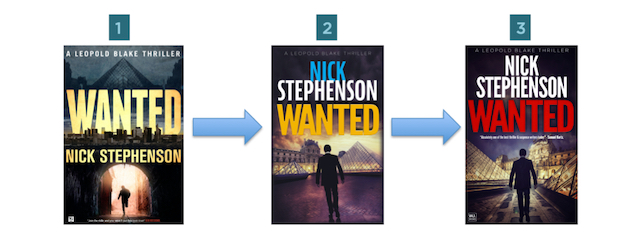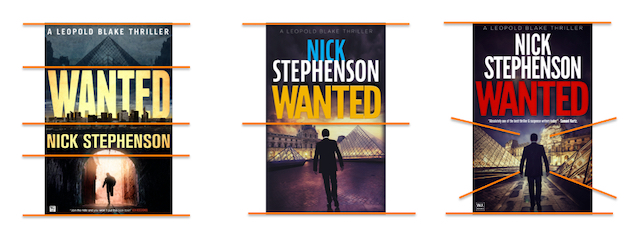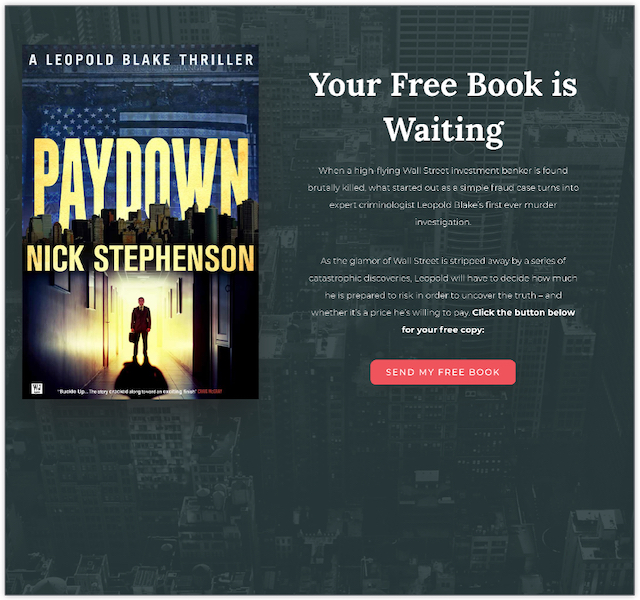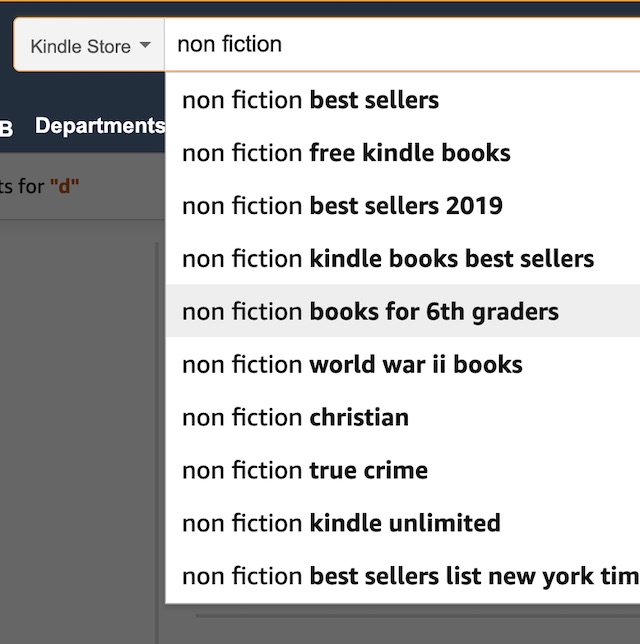
We hear from writers in the ProWritingAid community all the time that they find the prospect of marketing their books daunting. It requires a whole new set of skills and it’s hard to know where to begin. Facebook ads? Amazon ads? An author page? BookBub? There are so many options that many writers suffer from analysis paralysis and never even begin.
So, we reached out to one of our favorite book marketing experts, Nick Stephenson of YourFirst10kreaders.com to help us figure out the first steps to take.
Over to Nick...
How to Go from $0 to $1k a Month in Book Sales
By Nick Stephenson
Writing and publishing a book has never been easier – whole industries have sprung up to help support authors following their passions and building their career.
But just how difficult is it to get sales – especially as an independent author?
I’ve spent the last 6+ years helping authors grow their audience, sales, and exposure – and I’ve seen a lot of changes. But one thing that stays the same are the principles of marketing.
That is, getting someone’s attention, keeping it, and then having them come back time and time again to buy your latest releases.
How to Boost Your Book Sales
It’s not “easy” (of course it isn’t) but, like anything, there are principles and frameworks you can follow to make it a whole lot less difficult.
So, in this article, I want to break down just how to go about building up your book sales to $1,000 per month (or more) – using proven strategies, tactics, and principles to help you get where you want to be.
And if you’d like to dive into this topic in even more detail, check out this replay of the live training session I did in August. I cover everything in today’s article (and a whole lot more) – plus a few “extras” I didn’t have time to include.
With that being said, let’s jump in!
Know Your Numbers
Before we can start work on “getting traffic,” there are a few things to work out first. The first is understanding your numbers or, in other words, how much traffic you are actually going to need to hit your financial goals.
If we stick with the $1k per month target (which is entirely do-able), then it breaks down like this:
- $1,000 per month
- $33 per day (more or less)
So, if your books are priced at $4.99 (adjust accordingly) – and you’re getting a royalty of $3.50 on that – you need to sell 9 or 10 copies per day to hit your target. Doesn’t sound all that insurmountable, does it?
And it gets better…
That figure is if you only have one book. If you have multiple books, and readers buy more than one book from you, then you don’t need to find 9 or 10 NEW readers each day. The actual figure might be a lot less. Let’s take a look at an example from an author with, say, 6 books.

In this case, the author sees readers progress through his or her catalogue to the extent that each new reader doesn’t just spend $3.50 – they spend $7.50. More than double. Why is this so important? It all comes down to clicks and conversions.
Case In Point
The author with 1 book needs to bring in 9.5 new readers every day to hit $1k per month. The author with 6 books only needs to bring in 4.4 new readers each day. In terms of clicks, if we assume 10% of people who click through to your book page will buy (that’s about right) then it looks like this:
- Author 1: needs 95 clicks
- Author 2: needs 44 clicks
The good news here is that even if you only have 1 book, getting 95 clicks per day isn’t impossible (or even that difficult). And if you are working on expanding your catalogue – or already have several books – it’s even easier. Chances are, you’ll fall somewhere on this scale. The key point to remember is once you break it down into “how many clicks do I need” then your job gets a lot easier.
(And ninja tip – if you have a few books out there but aren’t sure what your “read through rate” is, just count up your reviews on each book and see how they compare to each other – that should give you a good idea).
So – we can work out a rough idea of how many clicks we need (and you can adjust up or down depending on your revenue goals) – but how do we get those clicks? And how do we make sure those clicks are actually doing something useful?
Let’s take a look…
Optimise for Conversions
Before we start sending traffic to our books and websites, we need to make sure that traffic is going to “do something useful” once it gets there. After all, there’s no sense spending all that time and effort getting clicks if those clicks don’t convert!
In most cases, we want our traffic to do two things:
- Buy something
- Join our email list (so we can sell to them multiple times later)
Both actions have tons of value for you, and in some cases you can get people to do both. But before we get to that, we need to make sure our “online assets” (books, webpages, etc.) are geared up to convert as many people as possible to do one (or both) of those two things.
The first place to cast your eye will be your book pages on Amazon and the other stores. In this case, we want as many clicks as possible to turn into sales – and there are two main things to look at…
Your Book Cover
Everyone knows (or hopefully knows) that your cover design can make or break your chances – but what makes a good cover? And why is it so important?
In a nutshell, the perfect cover won’t just help you convert more clicks into sales, it’ll help you get more clicks in the first place. Think about all the thumbnail book covers readers see when they’re browsing for something to read – if your cover isn’t quite right, you won’t get as many clicks.
We ran a little experiment to see how this worked in real life – and ran 20 million Amazon Advertising impressions across 3 different covers to see what worked.
Here were the three contenders:

Interestingly, the improvement in clicks (the “click through rate”) from cover 1 to cover 2 was close to 50%. Even more interesting, the improvement from cover 2 to cover 3 (which only looks to be a slight change) was nearly 50% again!
In other words, we nearly doubled the number of people clicking through to our book page by changing out the cover.
We also saw the conversion rate jump to around double between covers 1 and 3. Meaning, with our new cover, we were nearly 4 times more likely to get a sale each time the book was displayed with the new design. Not half bad!
But what made it such a big change? It all comes down to “what readers expect”.

For thrillers, readers expect an image that “sucks you in” – like a tunnel – and you see rather a lot of red text and bold fonts. Simple changes on the surface, but it goes to show that “having a nice image” isn’t as important as “giving readers what they’re used to”.
So, if you’re planning a cover design, make sure you research “what’s working” in your genre (as they’re all different). And don’t try to re-invent the wheel!
Your Book Description
Your cover will get people to your “buy now” page – but the #1 influence on whether or not the reader, you know, actually “buys now” is the description. Or, in other words, what the book’s about.
The problem? Authors are good at writing stories, novels, and other long-form copy. What we’re not so good at? Condensing all that down into 3 paragraphs.
A problem I see all the time is authors who write a book description by simply listing out “what happens” in a blow-by-blow rundown of the book’s plot. This is great for a Wikipedia entry, but not so great for getting people to buy.
At the end of the day, your book description is sales copy – which requires a slight shift in mindset…
Example – Bad Book Description:
Set in Middle-earth, the story tells of the Dark Lord Sauron, who seeks the One Ring, which will help him rule the world.
The Ring has found its way to the young hobbit Frodo Baggins. The fate of Middle-earth hangs in the balance as Frodo and eight companions begin their journey to Mount Doom in the land of Mordor, the only place where the Ring can be destroyed.
Summary: This is what most authors do. List out the main plot points. On the plus side, we’ve covered the main protagonist, antagonist, conflict, and stakes. But it’s not very interesting… It’s basically just a premise.
Example – Good Book Description:
Sauron, the Dark Lord, has gathered to him all the Rings of Power. All he lacks in his plans for dominion is the One Ring – the ring that rules them all – which has fallen into the hands of the hobbit, Bilbo Baggins.
In a sleepy village in the Shire, young Frodo Baggins finds himself faced with an immense task, as his elderly cousin Bilbo entrusts the Ring to his care. Frodo must leave his home and make a perilous journey across Middle-earth to the Cracks of Doom, there to destroy the Ring and foil the Dark Lord in his evil purpose.
Summary: the information we’re presented with is the same (e.g. – we know what the premise of the book is) but the language used gives us a better emotional connection to the characters and events that are about to unfold.
And again, we tried out a few different book descriptions with our Amazon Advertising experiment – and found that amping up the language (rather than focusing on plot points) helped us boost conversions by over 30%.
Which isn’t half bad…
And the other good news? This stuff is easy to change. If you decide you’d like to try out a cover tweak or a new description, all you need is a few clicks and you’re done!
Make Your Summary Shine
Your summary should be clear, readable and gripping. If you're updating your description, why not try using a writing tool such as ProWritingAid? ProWritingAid is far more than just a grammar checker. Its Style Report highlights several areas of writing that should be revised to improve readability, including: passive and hidden verbs, over-reliance on adverbs, repeated sentence starts and emotional tells.
Your summary is your potential reader's first taste of your writing. You not only want it to tell them what your book is about, but also that you are a good writer.
Your Website
In addition to getting sales from our traffic, we also want to grow an email list. When we want to launch a new book, run a promotion, or get reviews, our email list is the #1 resource for getting great results.
When people land on our website we want them to join our mailing list (so we can tell them about our catalogue and all our new releases). The way we do this is with Reader Magnets.
In a nutshell, instead of just asking people to “Join My Newsletter” (boring!) we need to offer something of value in return for that email address. For most authors, this means offering a short story, novella, bonus chapters, video / audio versions, or something else. Anything can work, so long as it’s related to your books – and it’s “interesting”.
To make this work, we need a dedicated webpage outlining our offer – a simple headline (e.g. “Get Your Free Book”), a description of what people will get, and a signup form. Once someone enters their details, they’ll be added to your email database and you can automatically email them a welcome message containing a link where they can get their gift.
The main focus is making that webpage – or “landing page” – as effective as possible. Which means removing all menus, links, and other distractions. Just the offer, an image of what they’ll get, and a signup button or form. That’s it.

That way, you’ll get about 40% to 50% of people join up – versus the 5% to 10% that you’d normally see on a generic “Join My Newsletter” page.
And – good news – if you sign up with an email marketing provider like Mailerlite or Mailchimp, you’ll get a free plan that includes built-in landing pages, so you don’t even need your own website at first. MailerLite email marketing software has an excellent free plan so you can get started without any cost.
With that all sorted – your book pages are optimised, your landing pages are good to go – it’s time to start driving some traffic there…
Driving Traffic to Your Content
Types of Traffic
The first thing to remember – there is no shortage of traffic on the internet. You can either put in some time and work for “free traffic” or you can hop on down to the traffic store and buy some. (Note: this is the main reason why we want to know our numbers – if you know how much a reader will spend on your books, and what percentage of clicks turn into sales – you know how much you can spend on those clicks!)
In reality, you’ll do a little of both.
In the live workshop on August 20th, I’ll take you through all these in detail, but for now, here’s a run-down of some of the most effective methods. You don’t want to do all of these at once – just pick one or two at a time.
Traffic Options
Free or Permafree Books
A free book gets downloaded 50 to 100 times more frequently than a paid one. If your “read through” is good, a decent number of those free downloaders will move through the rest of your catalogue (and join your email list). You can even set your book to $0.00 permanently (I’ll show you how in the workshop) and set that up to run on autopilot. Best part? It costs you precisely… nothing.
Search Engine Optimisation
Most people don’t realise, but Amazon (and the other online book stores) aren’t stores, per se. They’re search engines. If you can set up your titles, keywords, and category choices to target the right people you can see amazing results. Rule of thumb – try and narrow it down as much as you can! I’ll show you exactly how to do this in the live workshop (and when you register, I’ll send you some free videos explaining more about all this).

Joint Promotions
A simple way to triple your exposure is to team up with two other people who have similar-sized audiences. You can promote each book at a time, taking it in turns (e.g. during a launch or promo), or promote everyone’s books all at once. You can create boxed sets and anthologies (this is how I hit the USA Today Bestseller list) and you can even run contests between yourselves to boost your three audiences. When you find the right people, this can have HUGE effects (and, again, it’s free!).
Contests
You can do these solo, or with promo partners (see above). The premise is simple – offer a sweepstake prize that your target reader would be interested in (e.g. – a bundle of books, a Kindle, etc.) and post your contest up on some giveaway directories. There are hundreds to choose from – GiveawayFrenzy is a great place to start – and you’ll start growing a list of entrants quickly.
Offer each entrant your reader magnet and keep those people who click through to download it. Discard the rest. Once the contest is done, and you’re left with only the people who WANT to hear from you. Easy! And while these promotions do cost money (although not a huge amount), we found our cost per subscriber was about 10x lower versus paid ads. A great result!
Paid Ads
Most likely, you’ll be looking at Amazon Advertising, Facebook Ads, and BookBub (self-serve) ads. These platforms allow you to bid for clicks, and you can set up campaigns to run 24/7. Each platform is a little different, and each has their pros and cons, but if you know how much you can spend on a click and still make a profit, you’ll be in a strong position. I’ll give you a full run-through in the live workshop (and in the free videos you’ll get when you register).
Email Blasts
You can also pay to get your book featured in book websites’ email newsletters, that often go out to hundreds of thousands – or even millions – of readers who like books like yours. Some are more effective than others, but you can “stack” these promotions up over a week or so to get the best results.
Final Thoughts
Those are some of my favorite traffic options. And, as I said, you only really want to focus on one or two at a time (so you don’t get overwhelmed).
Of course, we haven’t had the time to dig into each one – so if you’d like to learn more about all this (including more detail on understanding your numbers and optimising your books) then join me at YourFirst10KReaders.com.

